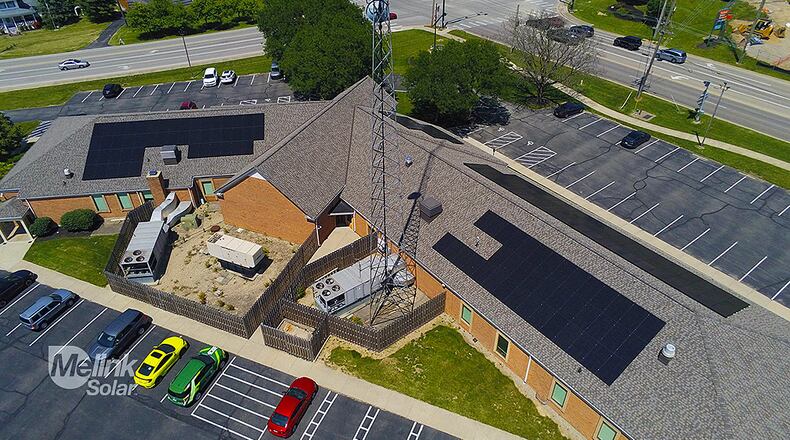The company is also installing two panel arrays along the eastern border of Miami University’s Oxford campus, and will install an array of panels on city-owned land east of Fairfield’s Groh Lane wastewater treatment plant.
“This solar array project reflects our commitment to fiscal responsibility, innovation, and infrastructure. This strengthens all of our township operations,’’ said Lisa Brown, township administrator.
“By leveraging solar energy, we’re lowering energy expenses and improving our energy resiliency, which directly benefits our operations.”
The 168 panels that were installed at a project cost of about $238,000 are expected to generate 96,873 kWh of electricity in its first year, said Monica Niehaus, Melink’s business development manager. Each panel weighs about 60 pounds, she added.
“That’s enough to power nine homes for a year in West Chester,’’ said Trustee Mark Welch. “Over (its) life, it’s going to generate about 40 percent of all the energy that is required in (the) township hall here.”
The savings to the township in energy costs over the panel’s 30-year life expectancy is about $600,000, Niehaus said.
“West Chester Township just turned a rooftop into a cost-saving asset, showing how a smart, forward-thinking municipality can protect taxpayers from rising utility costs while investing in its own future,” said Seth Parker, Melink’s chief executive officer.
“This array is visible proof that responsible stewardship and long-term vision can go hand-in-hand.”
It was decided to put the solar array on the roof after an analysis showed the underlying roof structure would support the panels, Brown said.
Adding to the decision was a 30 percent rebate offered under the federal inflation reduction act that is ending, Brown said.
Although the township doesn’t yet have a sustainability plan, Brown said “it makes sense to incorporate renewable energy where it makes sense.
“We want to be good stewards of our environmental resources. This is a perfect example of careful, data-driven decisions that achieve multiple social and township goals in one project.”
Brown said township officials will continue to look at future arrays where it makes sense – structures will support them and the payback period is reasonable.
Before installing the panels, the township’s roof was replaced – because of its age and condition – at a cost of $103,493, said Mike Huxsoll, the township’s director of community services.
The cost of the solar panels was $224,639 minus the estimated federal and service incentives of $69,590, bringing the cost, including the roof, to $238,121, township officials said..
About the Author

